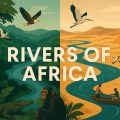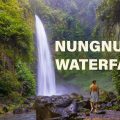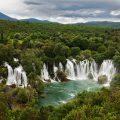River Rafting Guide: How to Choose Rivers, Gear Up, and Stay Safe
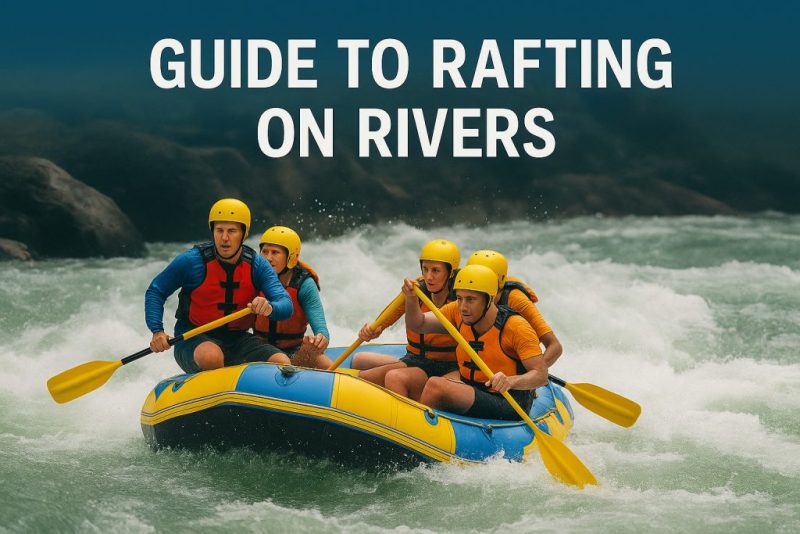
Your ultimate river rafting guide—learn how to pick the right river, prepare gear, stay safe, and experience thrilling rapids around the world.
Whitewater rafting is not just a sport—it’s a full-throttle journey into the heart of nature. From navigating foaming rapids to drifting past tranquil riverbanks, rafting offers a pulse-quickening mix of adrenaline, teamwork, and awe. Whether you’re a first-time paddler or a seasoned river runner, this river rafting guide will help you plunge confidently into the world of river rafting.
What is River Rafting?
What is River Rafting?
River rafting is the exhilarating sport of navigating flowing rivers—often wild and foaming—with a team aboard a sturdy, inflatable raft. It’s a unique blend of adrenaline and unity, where nature dictates the pace, and your paddle becomes your compass. The thrill comes not just from the surging rapids, but from the dance of coordination, timing, and guts it takes to ride them.
🛶 The Raft
Rafts used for whitewater are rugged, inflatable crafts made of heavy-duty PVC or Hypalon. They’re designed with multiple air chambers for safety and buoyancy, and their flexible yet tough hulls allow them to bounce off rocks instead of breaking. Most rafting boats range from 4-person to 10-person capacity, with larger expedition-style rafts used for multi-day journeys.
Key parts of a typical raft include:
- Thwarts – inflatable cross-sections that help maintain shape and serve as footholds
- Self-bailing floor – drains water quickly, crucial in rough rapids
- Grab lines and handles – for safety and easy re-entry after a splash
👨✈️ The Skipper (Raft Guide)
At the heart of every successful rafting crew is the skipper, also called the raft guide—a trained professional with nerves of steel and the river in their blood. The guide doesn’t just steer; they read the river’s language—its curls, drops, and swirls—anticipating eddies and obstacles before you even notice them.
From barking commands like “forward paddle!” to executing precise maneuvers through narrow chutes, the guide ensures your ride is safe, smooth (as possible), and seriously fun. They’re certified in whitewater rescue, CPR, and river navigation, and often share stories and humor between rapids.
🧰 The Gear
Every rafting journey begins with gearing up. Safety and comfort are non-negotiables on the river.
Essential rafting equipment includes:
- Paddle – lightweight and durable, with a T-grip handle and wide blade
- Helmet – protects against unexpected bumps with rocks or thwarts
- PFD (Personal Flotation Device) – snug-fitting life jacket designed for mobility and buoyancy
- Wetsuit or drysuit – keeps you warm in cold water conditions
- Water shoes or secure sandals – with good grip and toe protection
- Throw bag – a rescue rope for emergencies
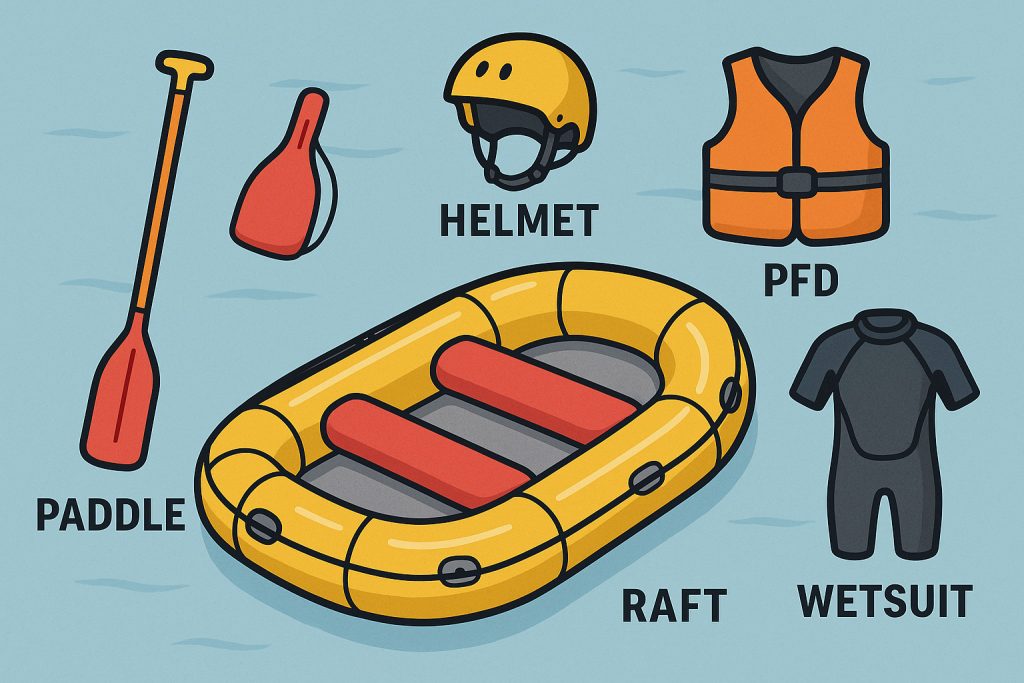
Optional but useful:
- Dry bags – for snacks, cameras, or spare clothes on multi-day trips
- Splash jackets – for wind and water protection
- Neoprene gloves and booties – in icy rivers
You should bring:
- Secure sandals or water shoes
- Quick-dry clothing (avoid cotton)
- Sunscreen & lip balm
- Water bottle
- Dry bag (for multi-day trips)
- Towel & change of clothes for after
🌀 Basic Techniques
Even first-timers can paddle like pros with some simple techniques:
- Forward Paddle – Dig in and paddle together. Synchrony is more important than strength.
- Back Paddle – Used to slow down or stop quickly—essential in narrow runs.
- High-Side! – A command shouted when the raft hits an obstacle; everyone scrambles to the “high side” to keep the raft from flipping.
- Bracing with feet – You tuck your feet under the thwarts or footholds to stay balanced and avoid being thrown out.
- Swimming rapids – If you fall out, float on your back with feet downstream, arms out for balance. Never stand up in moving water—foot entrapment is a real danger.
Types of River Rafting Experiences
From soft drifts to roaring chaos—choose your ride
🏕️ Expedition Rafting
Multi-day adventures into the wild
This is rafting at its most raw and immersive. Expedition trips take you deep into untamed landscapes—far from roads, phones, and civilization. Think 5 to 12 days paddling through places like the Zambezi Gorge, the Colorado River through the Grand Canyon, or Nepal’s Sun Kosi. You’ll camp under stars, wake to mist on the river, and paddle through roaring rapids one day and serene stretches the next. These journeys demand endurance and reward you with unforgettable wilderness immersion.
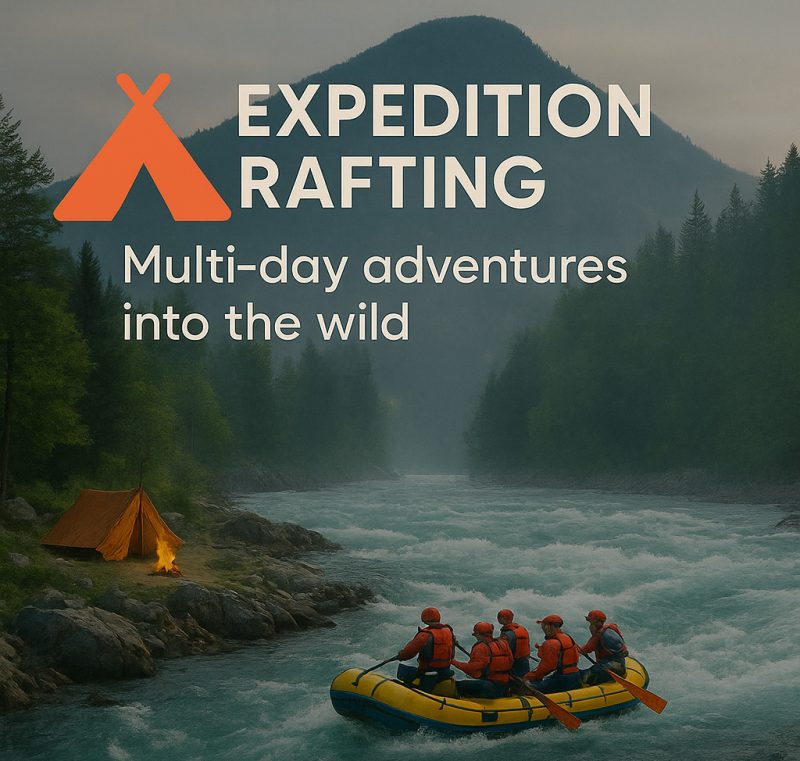
☀️ Full-Day Trip
One epic day of adventure
Ideal for travelers wanting a complete rafting experience without the commitment of a multi-day trip. You’ll tackle a range of rapids—often up to Class III or IV—and still be back in time for a warm shower and a local meal. Rivers like Bali’s Telaga Waja, Costa Rica’s Pacuare, or Bosnia’s Una offer full-day runs that blend nature, action, and cultural touchpoints.
🕒 Half-Day / Short Rafting
Quick and punchy
Need an adrenaline fix but short on time? Half-day trips offer an exhilarating burst—usually 1.5 to 3 hours—perfect for fitting into a morning or afternoon. Great for first-timers, backpackers, or families, these often run on Class II–III rapids. Popular examples include the Ayung River in Bali, the Noce River in the Italian Alps, or short runs on New Zealand’s Kaituna, famous for its waterfall plunge.
⚠️ Extreme Whitewater Rafting
Not for the faint of heart
This is where things get serious. Class V and above. Unpredictable, powerful, and often dangerous. Only for experienced paddlers with a skilled guide team and full gear. You’ll be dropping through rapids with names like “The Meatgrinder,” “Oblivion,” or “The Terminator.” Rivers like Chile’s Futaleufú, Zambia’s Zambezi, or select runs on Russia’s Chuya are among the wildest commercial options in the world. It’s a test of nerve, teamwork, and raw survival instinct.
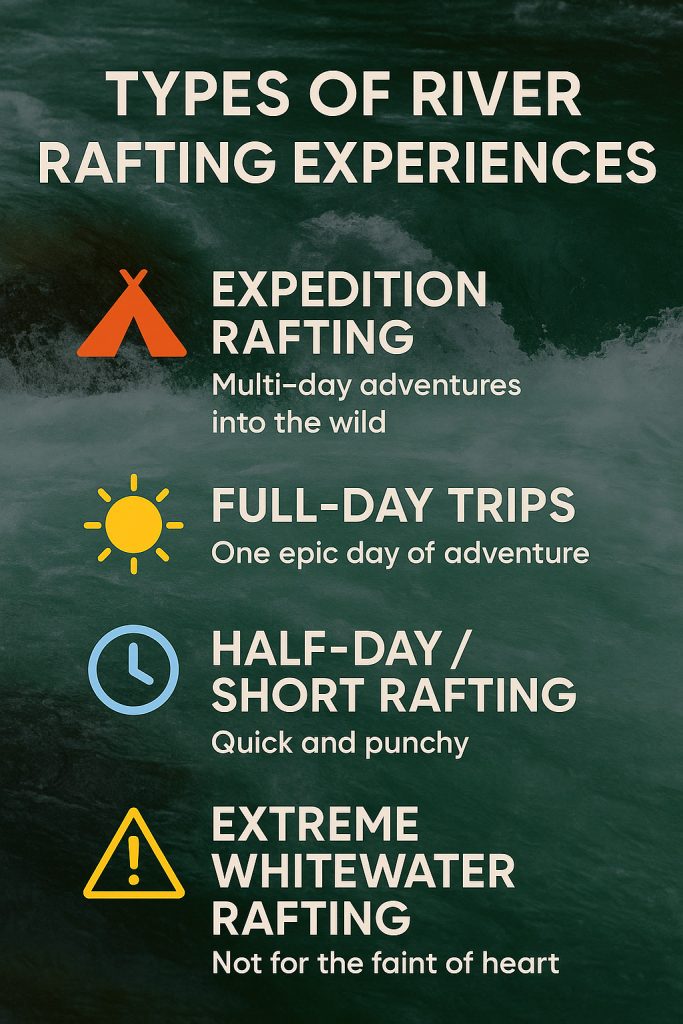
How to Choose the Right River for Rafting
Each river tells a different story—some thunder through rocky gorges, others wind gently through forested valleys. Here are key factors to consider:
✅ Skill Level
- Beginners: Try rivers like the Soča (Slovenia), Ardeche (France), or Lower New River (USA).
- Intermediate: Explore the Futaleufú (Chile), Sun Kosi (Nepal), or Tara (Montenegro).
- Advanced: Face the wild power of the Zambezi (Zambia/Zimbabwe), Ganges (India), or Upper Gauley (USA).
🌦️ Season and Flow
- Snowmelt-fed rivers peak in spring/early summer.
- Tropical rivers swell after monsoon rains.
- Some rivers are dam-controlled, offering predictable flows year-round.
🏞️ Surrounding Scenery
From jungle canyons and alpine valleys to desert gorges and glacier-fed runs, the river’s landscape shapes the adventure.
👨🏫 Safety Tips for Rafting
- Always wear your PFD and helmet—even on calm stretches.
- Listen to your guide’s commands—they know the river’s quirks.
- Hold the paddle correctly—a misplaced blade can cause injury.
- If you fall out, float on your back with feet downstream.
- Never raft alone or on an unknown river without a local guide.
🌊 Understanding River Rapids: The Grading System
Rapids are categorized in classes, generally running from I to VI. While class I rapids are easy to navigate and require little manoeuvring, class VI rapids pose a threat to life with little or no chance for rescue. River rafting sports are carried out where many rapids are present in the course.
A system of grading has been developed which allows rafters to assess and compare certain rivers. This system is known as The International River Grading System.
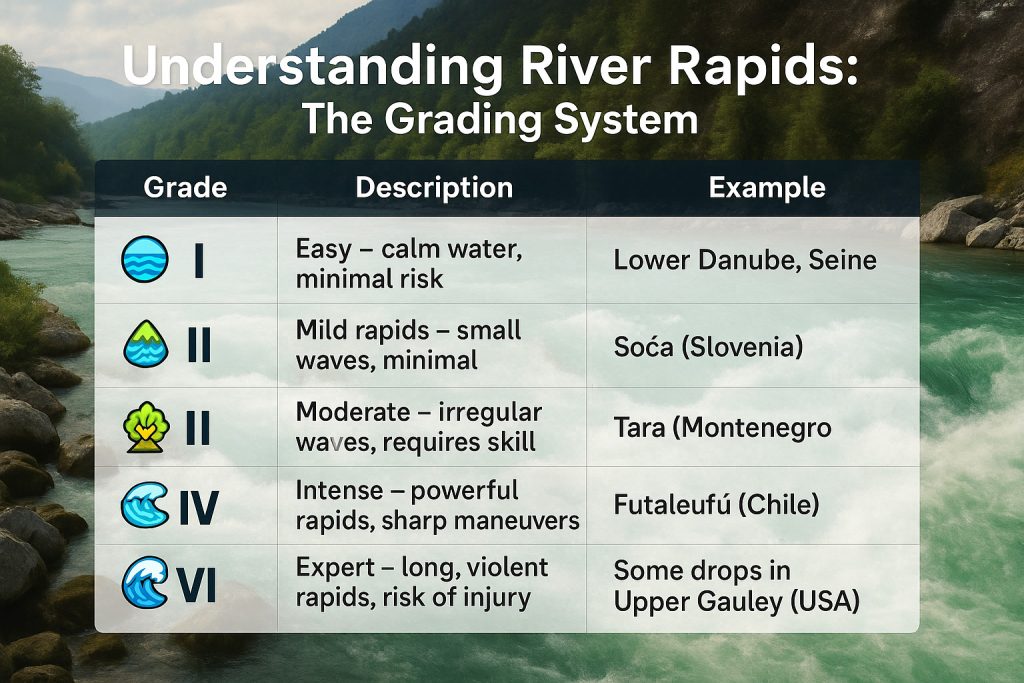
Grade I: Easy Rivers that are flat with slow-moving water and the occasional small or simple rapid.
Grade II: Novice Rivers that frequently have rapids which are moderately sized with small and simple waves and eddies.
Grade III: Intermediate For a rafter with some training and proficiency, these rivers are easily navigated. There will be a number of rapids that have abnormal and irregular waves. There may even be a series of steps with a steep gradient that must be done.
Grade IV: Advanced These rivers are considered to be very challenging, with long stretches of rapids with irregular waves.
Grade V: Expert These rivers have all the same issues as grade IV does, however it is going to be more extreme. Meaning the waves are larger, drops steeper, and rapids more violent and less predictable.
Grade VI: Unraftable Some consider rafting on a class VI river suicidal, and only extreme luck or skill will allow you through)
🌟 Top Rafting Rivers Around the World
- Zambezi River, Zambia/Zimbabwe – Class V thrills below Victoria Falls
- Colorado River, USA – Epic Grand Canyon expedition
- Futaleufú River, Chile – Electric blue rapids in Patagonia
- Sun Kosi, Nepal – A Himalayan rollercoaster
- Tara River, Montenegro – Europe’s deepest canyon
[→ See our full list: The Wildest Rivers for Whitewater Rafting]
💬 Final Words: Why Raft?
Rafting isn’t just about conquering rapids—it’s about surrendering to the flow. It’s the teamwork in the boat, the roar of the water, the cool spray in your face, the silent moments between rapids when the world feels wild and perfect.
So grab your paddle. The river is calling.

